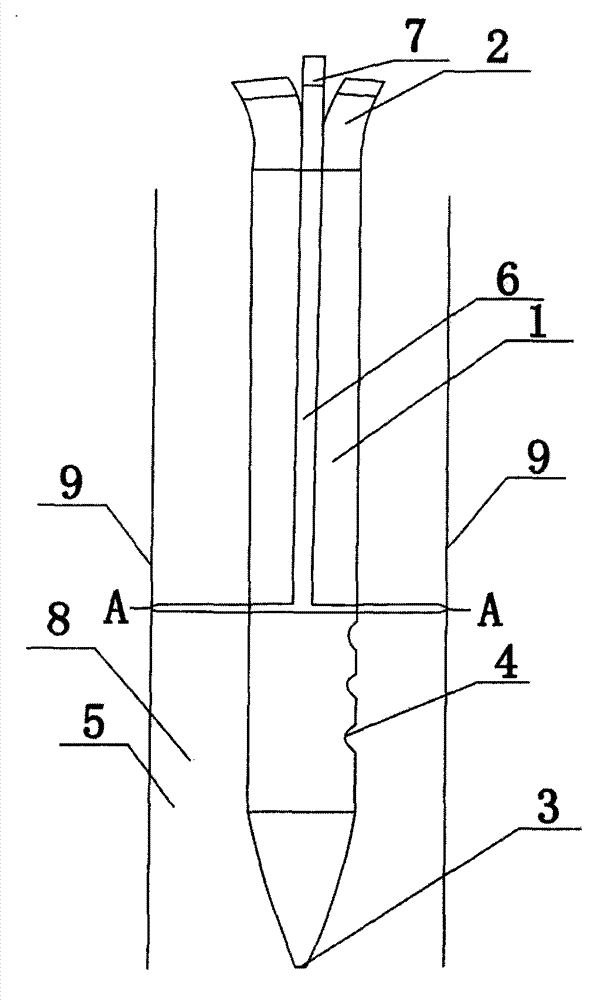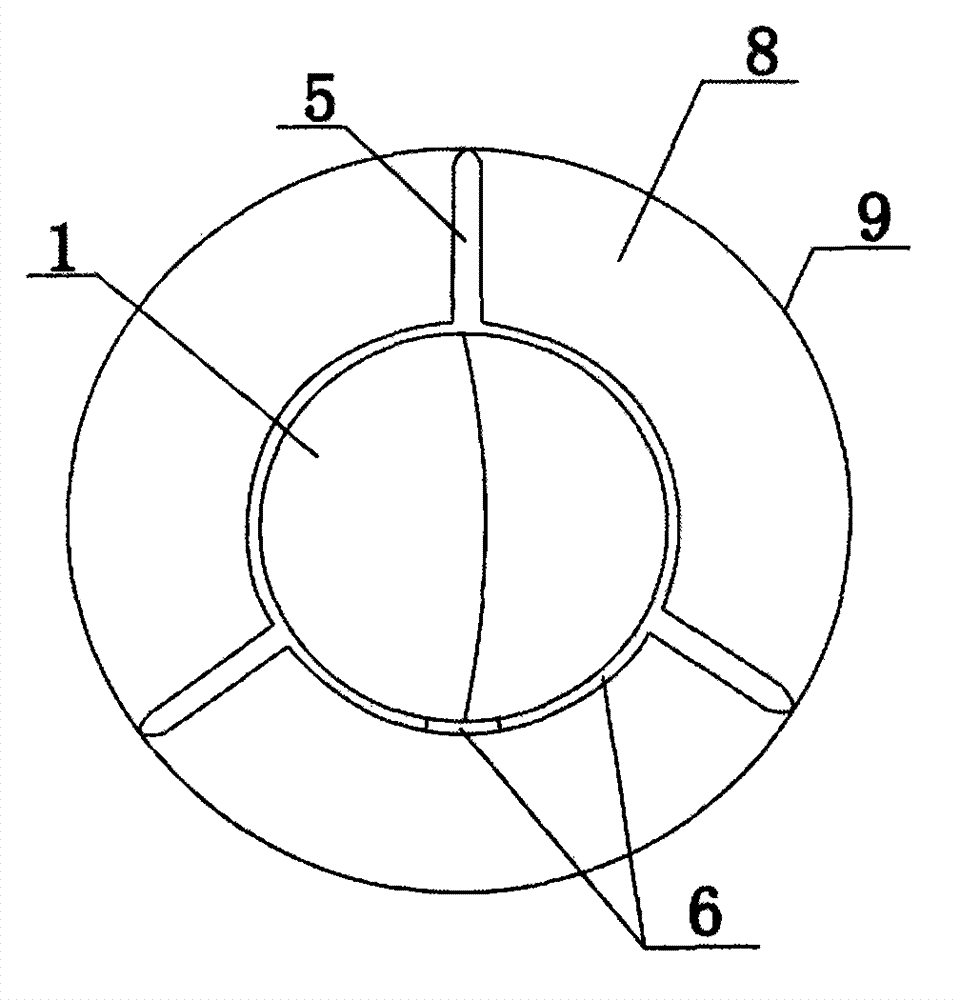Central venous catheter with wall adherence preventing device for dialysis
A central venous catheter and catheter technology, which can be applied to dialysis systems, balloon catheters and other directions, can solve the problems of difficult development, high process requirements, high price and the like, and achieve the effects of strong clinical practicability, simple manufacturing process and low cost.
- Summary
- Abstract
- Description
- Claims
- Application Information
AI Technical Summary
Problems solved by technology
Method used
Image
Examples
Embodiment 1
[0028] Such as figure 1 and figure 2 As shown, a central venous catheter for dialysis with an anti-adherence device includes a catheter body 1, an outlet 2 at the upper end of the catheter body 1, a blood inlet 4 on the lower side wall of the catheter body 1, and a blood outlet 3 at the lower end of the catheter body 1 , an anti-adherence device is also provided, and the anti-adherence device is an air bag that is sleeved on the upper part of the blood inlet 4 and close to the blood inlet 4, and the air bag includes an air bag main body and an air bag channel connected to the air bag main body 6. The other end of the airbag channel 6 extends to the outlet 2 at the upper end of the catheter to form a vent 7. The airbag main body includes three identical airbag bags 5 evenly arranged on the same horizontal plane, and the three airbag bags 5 are connected to each other. Forming an included angle of 120°, the airbag bag 5 is perpendicular to the catheter body 1 in the inflated s...
PUM
 Login to View More
Login to View More Abstract
Description
Claims
Application Information
 Login to View More
Login to View More - R&D
- Intellectual Property
- Life Sciences
- Materials
- Tech Scout
- Unparalleled Data Quality
- Higher Quality Content
- 60% Fewer Hallucinations
Browse by: Latest US Patents, China's latest patents, Technical Efficacy Thesaurus, Application Domain, Technology Topic, Popular Technical Reports.
© 2025 PatSnap. All rights reserved.Legal|Privacy policy|Modern Slavery Act Transparency Statement|Sitemap|About US| Contact US: help@patsnap.com


